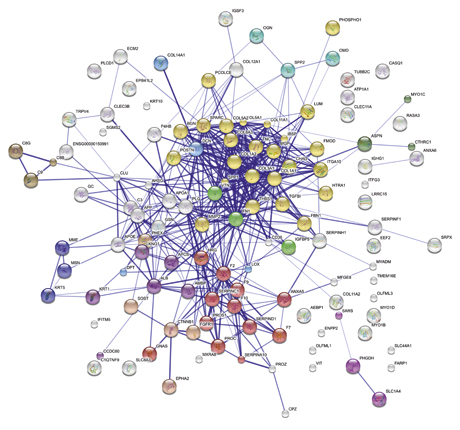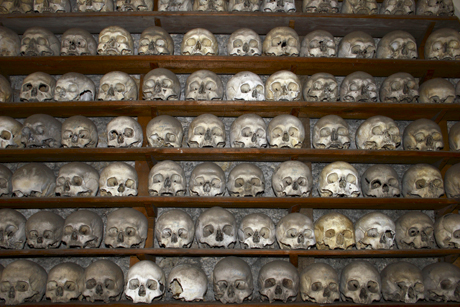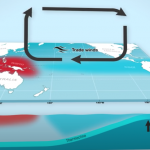 Molecular detectives find soft, biological material in hard, fossilised bones of animals and humans. The material bears witness to everything from hominin skin colour and dinosaurs’ kinship with birds to the Incan consumption of coca leaves.
Molecular detectives find soft, biological material in hard, fossilised bones of animals and humans. The material bears witness to everything from hominin skin colour and dinosaurs’ kinship with birds to the Incan consumption of coca leaves.
The 15-year-old girl has lived like the South American Inca elite for a year. Servants bring her meals of blessed corn and llama meat, her clothes are exquisite, and she wears gold and silver jewellery. She has been chosen as an example of physical and spiritual perfection, and thus, she is to be sacrificed to the Pachamama goddess.
As the priests slowly lower the girl into the burial shaft, her breathing is heavy and irregular. She is deathly ill and highly intoxicated. At the bottom of the shaft, the priests slacken the ropes, and the doomed girl is left to freeze to death on the mountain peak. She is one of three child mummies, that were found in 1999 near the peak of the 6,739-m-tall Llullaillaco volcano in Argentina.
The stories of the child sacrifices of the 1500s were told by the Spanish conquistadors. But the details concerning the girl’s last hours have not been reported until today – by molecules such as immune proteins preserved in the girl’s dead body and in the clothes she was wearing when she died. The biological material reveals that her body was on full alert. She had pneumonia and had been intoxicated by alcohol and coca leaves.
New methods allow scientists to find a veritable gold mine of fresh material in everything from dry mummies and frozen mammoths to fossil dinosaurs. In recent years, DNA has provided scientists with lots of new knowledge, but now, an entire palette of other organic molecules are added.
Scientists get a new time machine
Molecular investigators most of all require proteins, which are a type of biological building blocks. Like DNA, proteins can reveal the kinship between species. But they can also disclose the processes, which took place prior to the moment of death, as in the case of the dead Inca girl. But primarily, proteins are tougher than DNA, and they can thus take scientists further back in time. Even million-year-old fossils whose organic material was believed to have been broken down turn out to contain organic clues.
TYRANNOSAURUS rex supplies blood cells
In 2005, palaeontologist Mary Schweitzer won attention througout the world, when she published the discovery of blood vessels and blood cells in a dinosaur bone from a recently excavated 68-million-year-old T. rex found in Hell Creek, Montana USA.
Schweitzer’s mentor, Jack Horner, had allowed her to study the internal structure of the bone. In order to realise her plans, she had to dissolve the outermost minerals of small fractions of the bone. But by accident, Schweitzer’s lab technician forgot the bones in the acid bath. All the bone fragments ought to have been dissolved. The understanding among palaeontologists had always been that before tissue can fossilise, the organic material must have been broken down.
But when Mary Schweitzer looked through her microscope, she was stunned. The minerals were gone, and what remained was a flexible, soft material, which proved to be a fine network of blood vessels, red lumps of cells, and even cells which seemed intact.
Mary Schweitzer published her controversial results in 2005, only to face fierce protests from the scientific establishment. To begin with, her colleagues refused to believe that she had found biologic material. In 2007, she added fuel to the fire by publishing the discovery of proteins in the bones such as a version of the connective tissue protein collagen, which is very similar to modern birds’.
Schweitzer interpreted the discovery as evidence supporting the once controversial theory of birds being dinosaurs. Since then, she has confirmed her findings in several studies and even found evidence indicating that the bones contain DNA, which she is now trying to sequence.
Revolutionary mammoth
Proteins may provide scientists with detailed knowledge about some species and individuals. But whereas fossil DNA developments have been fast during the past decade, proteins still have something to prove.
Scientists have sequenced the complete genetic material of Neanderthals and mammoths, including the genetic formula of all proteins. In comparison, scientists have so far only found a small handful of all the different proteins produced by an organism. And proteins such as collagen, which Schweitzer found in her T. rex bone, changes so little throughout the animals’ evolution, that there is almost no variation across species. Only main groups like birds and crocodiles can be distinguished, and that is a problem, as variation allows the reconstruction of family trees. Experts have a reasonable idea of how long it takes for mutations to occur. If you compare the complete set of genes of two species – their genomes – scientists can count the number of mutations and calculate when a common ancestor lived.
In this way, palaeontologists can draw family trees and date branching points. Some proteins also manifest this type of variation, but until last year, scientists had only found the “simple” proteins.
This suddenly changed in 2012. In a ground-breaking study, chemist Enrico Cappellini from the University of Copenhagen, Denmark, found 126 proteins in a 40,000-year-old mammoth bone. And most importantly, the discovery included the much-coveted blood proteins, which vary a lot from species to species and, like DNA, can be used to draw family trees. Cappellini made his findings thanks to a new and sophisticated version of the mass spectrometer. Like in DNA analyses, the device maps out everything in a sample – instead of focusing on one particular protein. The discipline is called “fossil proteomics”, the mapping out of all the proteins which have survived in a fossil sample.
DNA is the genetic formula, which is the same for all our cells, whereas proteins differ very much in for instance liver cells and nerve cells. They change as an organism develops, and they differ depending on the processes that take place in an organism. A 15-year-old Incan girl’s pneumonia is reflected in the proteins.
Proteins do not “compete” with DNA, but according to Enrico Cappellini, they can be a supplement to the information which can be derived from DNA.
A helping hand to horse genome
In June 2013, one of the world’s leading fossil DNA experts delivered a good example of such “cooperation”. Professor Eske Willerslev of the Natural History Museum in Copenhagen sequenced the genome of 700,000-year-old horse bone fragments, assisted by Cappellini.
The genome is more than 10 times older than any earlier genomes and thus pushes the limits of the age of the material, scientists are able to reconstruct. However, the record had not been beaten without the assistance of proteins. Willerslev and his colleagues used fossil proteins to find the “pockets” in the bone fragments, where the chances of finding original DNA were the best.
Thanks to the sequencing, scientists can calculate that the evolutionary his-tory of horses dates 4.5 million years back. They can see that a good sense of smell and a strong immune system was developed at an early point and they can trace the modern horse, which is the most “original”, genetically speaking.
Based on the horse experience, Willerslev thinks it will be possible to sequence up to two-million-year-old genomes. But one prerequisite is that the fossil was preserved under ideal conditions, such as the permafrost of Antarctica.
Close to our ancestors
This is where molecules such as Enrico Cappellini’s mammoth proteins enter the scene. Proteins, which involve the right variation, will be able to extend the family trees even further back in time.
So far, Mary Schweitzer is the only one going all the way back to the dinosaurs, but other scientists have documented that proteins can take us at least 3.5 million years back in time, meaning that we can go back to our own origin 2-3 million years ago.
Humans’ genetic kinship with close ancestors such as the Neanderthals and the Denisovans have already been mapped out, and now, scientists focus on even older ancestors such as the Homo heidelbergensis or the Homo erectus, who lived 1.3 and 1.8 million years ago respectively.
South African find is promising
The greatest expectations are concerned with a debated discovery in South Africa – the new and extremely well-preserved Australopithecus sediba, which was published by paleo-anthropologist Lee Berger in 2010. The skeletons of this human ancestor are slightly less than two million years old and so well-preserved that they seem to involve organic material in the shape of skin fragments.
Skin will potentially be able to reveal, whether our early ancestors were furry, the colour of their hair and skin, and perhaps even the presence of sweat glands, which can reveal why and when our ancestors shed their fur. But according to one of the scientists, PhD student Rachelle Keelling, skin is not the most sensational lead that molecurlar detectives are following. The fossils carry chemical clues of proteins and fat molecules. The analysis has not been fully completed, but Keeling describes the discoveries as promising.
If the sediba includes the right type of proteins, the scientists may be able to map them out and draw family trees. The sediba lived at the same time as our early ancestors, but scientists are still not sure how we are related. The fossils of early Homo species are so few that they can literally fit into a shoe box.
With a molecular family tree of the sediba, scientists can draw lines to later hominids and reconstruct the family tree without the missing fossils. Perhaps we can finally find out precisely who we are and where we come from.









